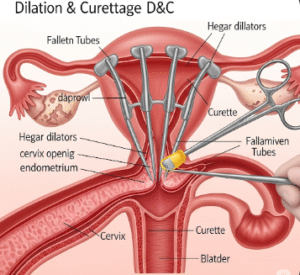What it is
Natural Family Planning (NFP) is a method of birth control that does not use drugs, devices, or surgery. Instead, it involves tracking a woman’s fertility signs to determine fertile and infertile periods in her menstrual cycle.
Key points:
- Based on body’s natural fertility indicators, such as basal body temperature, cervical mucus, and menstrual cycle patterns.
- Can be used to prevent or achieve pregnancy depending on family goals.
- Requires daily monitoring, accurate record-keeping, and commitment.
- Considered non-invasive, hormone-free, and reversible.
Why it’s done
Natural Family Planning is chosen for:
- Contraception: Couples wishing to avoid pregnancy without using hormonal or barrier methods.
- Fertility awareness: Couples trying to conceive naturally by identifying fertile windows.
- Health reasons: Avoiding side effects of hormonal contraceptives.
- Religious or personal beliefs: Aligns with beliefs that discourage artificial contraception.
Note: NFP is most effective when couples follow the methods correctly and consistently.
Alternatives
Other family planning options include:
- Barrier methods: Condoms, diaphragms, or cervical caps.
- Hormonal contraception: Pills, patches, injections, or IUS/IUD.
- Permanent methods: Sterilization (tubal ligation or vasectomy).
- Fertility treatments: If planning pregnancy, methods like IUI or IVF may be used.
Important: NFP is less effective than modern contraceptives if not practiced correctly, but it is safe and non-invasive.
Preparation
Successful natural family planning requires preparation:
- Education: Learn about the menstrual cycle, ovulation, and fertility signs.
- Monitoring tools: Thermometers for basal body temperature, cervical mucus charts, or fertility apps.
- Record-keeping: Maintain a daily log of temperature, mucus, and cycle dates.
- Lifestyle considerations: Stress, illness, or irregular cycles can affect fertility indicators.
Patient instructions:
- Track fertility signs consistently every day.
- Abstain from unprotected sex or use barrier methods during fertile periods if avoiding pregnancy.
- Consult a trained NFP instructor or healthcare professional for guidance.
How it’s done
Natural Family Planning involves monitoring fertility signs throughout the menstrual cycle:
- Basal Body Temperature (BBT):
- Measure temperature every morning before getting out of bed.
- A slight rise indicates ovulation has occurred.
- Cervical Mucus Observation:
- Monitor changes in cervical mucus: clear, stretchy mucus indicates fertile days.
- Calendar Method:
- Track menstrual cycle length to predict fertile and infertile days.
- Symptothermal Method:
- Combines BBT, cervical mucus, and cervical position for higher accuracy.
- Fertility Apps:
- Digital apps can help record and analyze cycle data, providing fertility predictions.
Duration: Continuous daily monitoring throughout the cycle; typically 6–12 months to become proficient.
Recovery / Post-Method Considerations
Since NFP is non-invasive, there’s no recovery needed:
- Immediate reversibility: Fertility returns immediately if couple stops abstaining during fertile periods.
- Ongoing monitoring: Essential for accuracy and effectiveness.
- Pregnancy planning: Couples trying to conceive can identify fertile windows naturally.
Benefits:
- Safe, hormone-free, and non-invasive.
- Helps couples understand fertility and menstrual health.
- Can be combined with other methods for higher efficacy.
Complications / Risks
Natural Family Planning is generally safe but has potential limitations:
- Lower effectiveness: Typical-use failure rate is 15–25% per year.
- Cycle irregularities: Stress, illness, or hormonal imbalances can reduce accuracy.
- Human error: Incorrect tracking or misinterpretation of signs increases risk of unintended pregnancy.
- No protection against STIs: Requires barrier methods for sexually transmitted infection prevention.
Prevention / Management:
- Consistent daily monitoring and accurate record-keeping improve effectiveness.
- Combining NFP with barrier methods during fertile days can reduce risk of unintended pregnancy.
- Seek guidance from trained instructors or healthcare professionals.
Treatment Options in Korea
Natural Family Planning is supported through health education, clinics, and family planning programs in Korea:
Key features:
- Available through community health centers, hospitals, and reproductive health clinics.
- Couples receive education on fertility awareness, cycle tracking, and methods.
- Compatible with other family planning methods for dual protection.
- Supported by trained educators and healthcare professionals for effective implementation.
- Promotes reproductive health, informed decision-making, and safe family planning.
Summary: Natural Family Planning in Korea is a safe, non-invasive, and effective fertility awareness method. With education, consistent monitoring, and professional guidance, couples can prevent or plan pregnancy naturally, understand their reproductive health, and make informed family planning choices.













